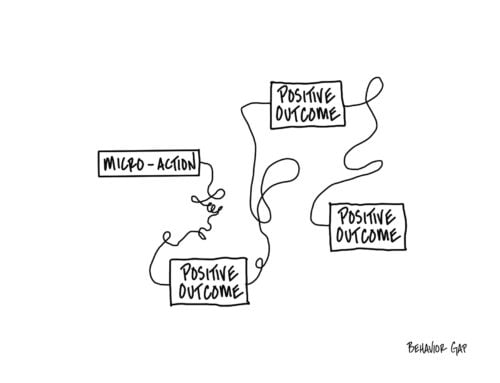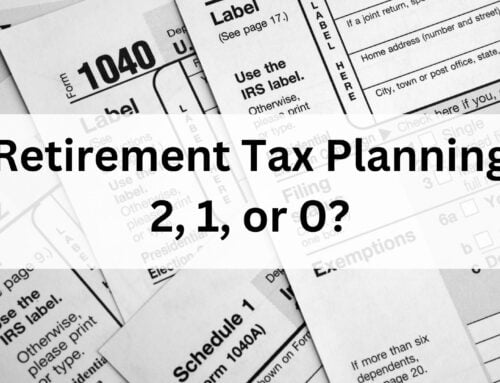Student Loan Repayment
As of the end of December, nearly 40% of federal student loan borrowers had missed at least 1 payment after COVID pause ended in October. 25% hadn’t made any payments. Student loan debt now totals over $1.74 trillion and one of the fastest growing cohorts is people over 50 with staggering debt loads of $100,000 or more.
In the past 2 weeks I’ve met with 3 families that all have more than $150,000 in Parent Plus student loans from sending their kids to college. 2 of those families still have 2 kids in or about to start school so their totals will easily surpass $200,000. Even with extended payment plans they could be paying $1500 or more per month for 25 years. There goes the retirement plan.
Is there hope?
For a short time, there could be.
The new SAVE plan & the double-consolidation loophole.
The Biden administration introduced the new SAVE plan to replace the Revised Pay As You Earn (REPAYE) plan. It is the most generous income-based student loan repayment plan. While you can sign up for it now, the final lower rates won’t go into effect until July.
SAVE Highlights
- Raises protected income percentage from 150% of poverty level to 225% of poverty level lowering discretionary income “available” for loan repayment
- Lowers discretionary income percentage to 5% for undergraduate loans
- Discretionary income percentage of 10% for graduate loans
- If borrower has both graduate and undergraduate loans, it will use the weighted average of the two amounts
- Interest Subsidy – If you make the required payment, even if it is $0, the interest you should have paid is not added back to your principal balance. This will prevent the ballooning of your debt
- Maximum repayment period for loan forgiveness is 20 years for undergraduate loans and 25 for graduate loans. It could be as short as 10 years if you borrowed less than $12,000 in undergraduate loans
Loans Eligible for SAVE
- Direct Subsidized Loans
- Direct Unsubsidized Loans
- Direct PLUS Loans made to graduate or professional students
- Direct Consolidation Loans that did not repay any PLUS loans made to parents
Loans NOT Eligible for SAVE
- Direct PLUS Loans made to parents
- Direct Consolidation Loans that repaid PLUS loans made to parents
You indicated SAVE could help parents with lots of Parent Plus loans, but then you indicated Plus loans or consolidated Plus loans aren’t eligible. Which is it?
Double Consolidation
This is where it gets a little bit complicated. You need to do a double consolidation. Let’s assume a borrower has 6 different Parent Plus loans. At a high level, this is what you need to do.
Step 1 – Perform a direct consolidation for 3 loans to a student loan servicer and perform a direct consolidation for 3 loans to a different student loan servicer. At the end of this step you’ll have 2 directly consolidated loans that paid off Plus loans to parents (not eligible for SAVE).
Step 2 – Consolidate these 2 direct consolidation loans to a 3rd student loan servicer. You now have a consolidation loan that paid off 2 consolidation loans (and not Parent Plus loans). Once this is consolidated, you can set this loan to the SAVE repayment plan.
That’s the 500-foot view and there are numerous things you have to get right to make this work so make sure you fully understand the process before embarking on this consolidation.
So why is this only available for a short time? Parent Plus loans were never intended to be eligible for SAVE as you can see by the fact that they specifically call out Parent Plus loans and consolidated Parent Plus loans as ineligible for SAVE (and other Income-Based Repayment plans) other than ICR. ICR is the least favorable income-based plan. This loophole exists because the student loan servicers didn’t have very good records or the ability to track these multiple consolidations. The Department of Education issued a rule (link).
In July 2023 that will end the ability to take advantage of the double consolidation loophole. This rule goes into effect July 2025. After that, the only income-based plan available for Parent Plus loans will be the Income-Contingent Repayment.
So how good is the SAVE Plan? Here’s an example:
Mom & Dad (age 54) took out $180,000 in Parent Plus Loans at average 6.9%. They make $250,000 per year in combined income. An extended fixed plan will be $1,261 per month for 25 years for a total of over $378,000.
If they do the double consolidation and continue to file their taxes as married filing jointly, their payment drops to $857 in July 2024 (when the new SAVE rates are fully in place). $400 per month is nice. Let’s assume the loans are in the name of the spouse with $110,000 in income and they start filing taxes as married filing separately, their payment will drop to $322 per month in July 2024. SAVE is also for 20 years versus 25 for the extended plan.
Additionally, even if they have to continue to file married filing jointly, but want to retire when they are 65 SAVE can help. Let’s assume their income drops to $100,000 per year. Their payment will drop to $232 for the last 9 years.
PSLF, Forgiveness, and the Tax Man
The SAVE plan is eligible for forgiveness at the end of the term. For those parents working in a job that qualifies for Public Service Loan Forgiveness (military, government, most non-profit jobs), you may be able to reduce your repayment window to 10 years. If you meet the criteria and have 120 payments any remaining debt will be forgiven. Additionally, PSLF forgiveness means you don’t have tax bill associated with the amount forgiven.
Even if you don’t qualify for PSLF, after 20 years in the SAVE plan any remaining balance is cancelled. That’s great, but you will pay taxes on the amount forgiven. For some borrowers that could tens of thousands of dollars so make sure you’re saving some of the money you would have been paying toward the loans so you’re prepared. Again, in our example that bill will come due when the couple is 74 or 75. Probably not what most retirees are thinking about.
Wrap Up
Student loan repayment is complex. There are numerous options and considering if you’re considering a double consolidation, you’ve got a limited time. Also understand that this is considered a loophole. While you can be successful doing it, there is no guarantee that the Department of Education doesn’t retroactively change the rules. This is probably unlikely, but if you are considering it, make sure you go into it with your eyes open.
If you want to talk about your student loans or any other financial topic, don’t hesitate to set up a call (link).
If you like this article, check out this one on How Much Student Loan Debt Is Too Much (link).



